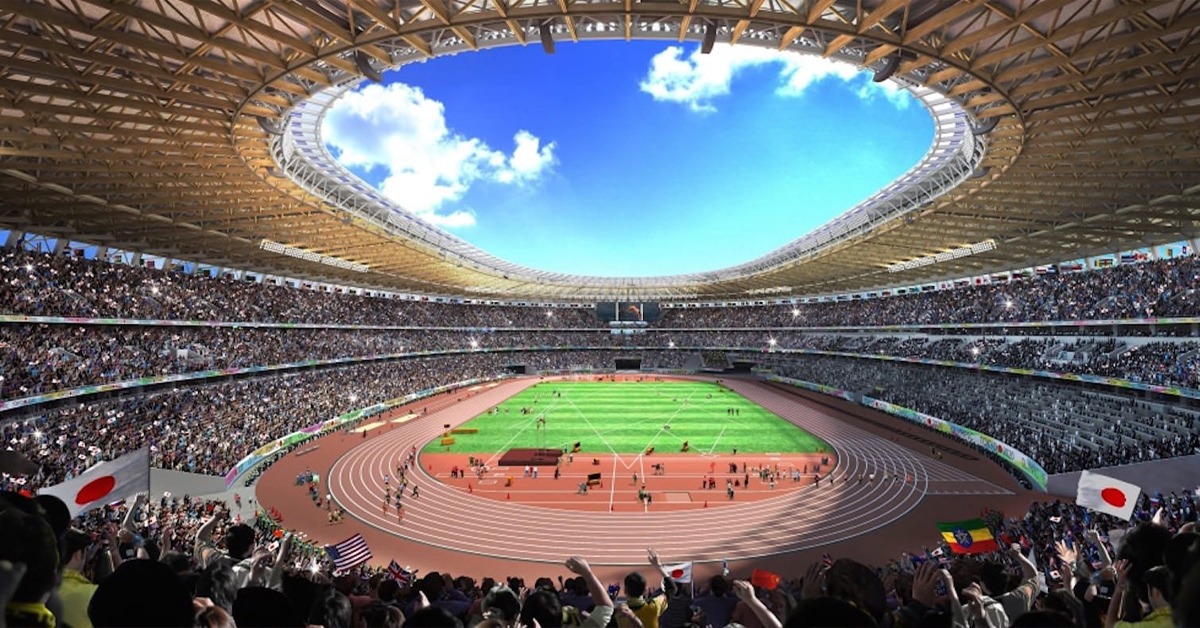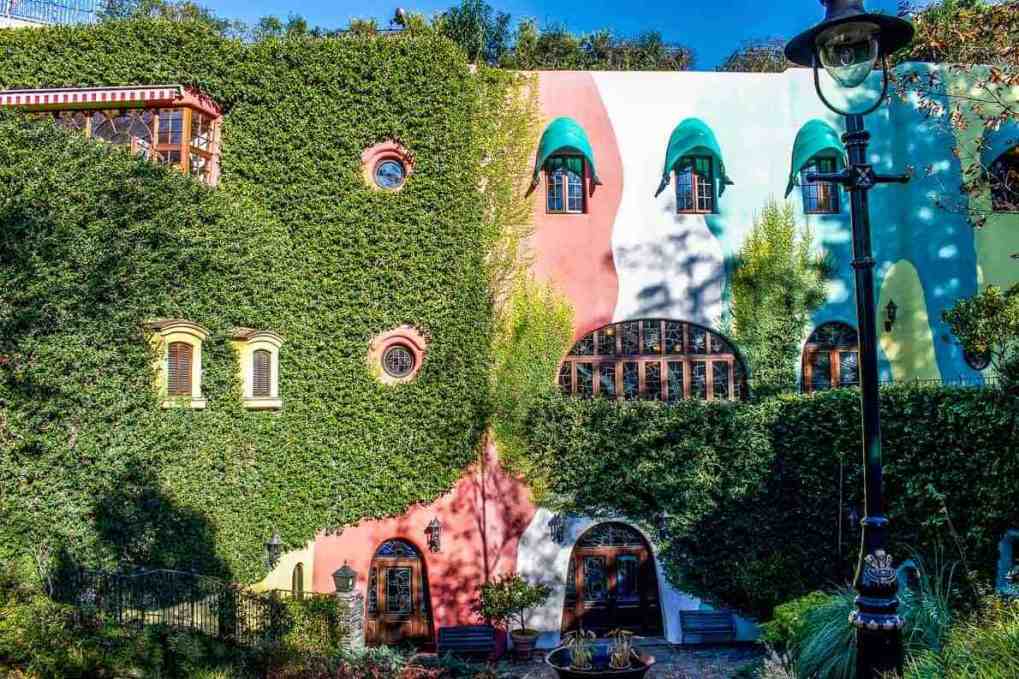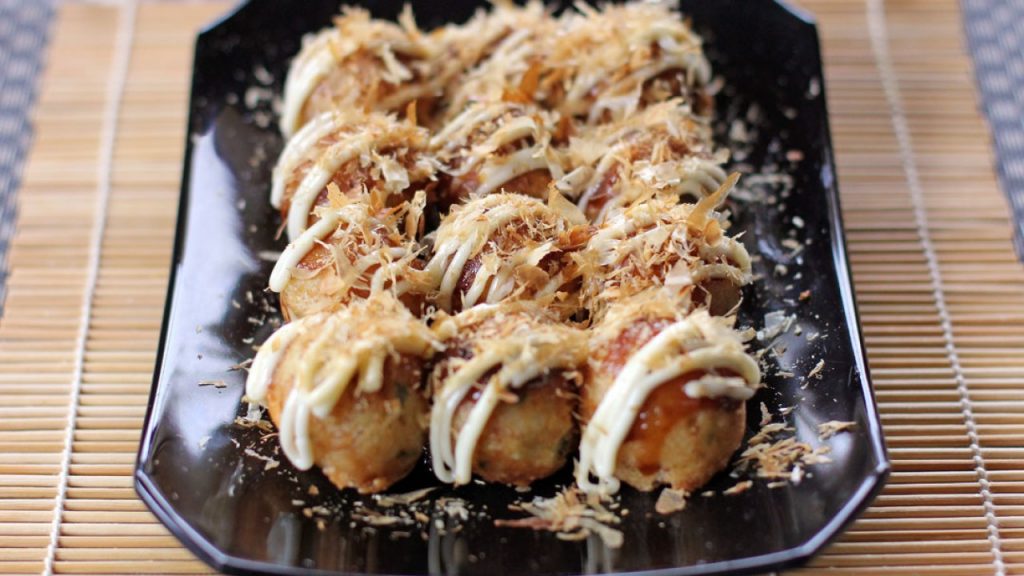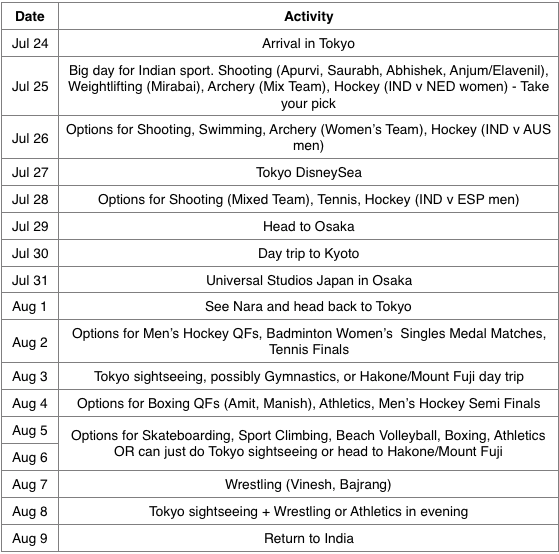Featured
Tokyo 2020: The other expenses involved in trip to the Olympics
The major costs associated with a trip to Tokyo Olympics – flights, accommodation, Covid Security, Safety and transportation.

The previous parts of this article series (available here, here and here) discussed the major costs associated with a trip to Tokyo 2020 – flights, accommodation, tickets and transportation. This concluding article now looks at the other costs involved in a trip and provides an overall picture.
Sightseeing and Activities
Japan is known for its numerous temples and shrines and there are too many to count in Tokyo as well as the rest of country. Probably the most famous in Tokyo are the Meiji Shrine and the Senso-ji Temple.
Tokyo also offers a lot of museums. Some of the more well-known ones are as follows.
- A newly opened Japan Olympic museum (opposite Olympic stadium), JPY 500 per adult.
- teamLab Borderless - Digital Art Museum – A must visit, JPY 3200. It is recommended to book tickets in advance online to avoid lines.
- Ghibli Museum (7 km from Badminton stadium) - Art Museum, JPY 1000. Admission is by advance reservation only.
- Tokyo National Museum (Ueno Park) - Art Museum, JPY 620. Many other museums nearby.
- Samurai Museum (Shinjuku Area), JPY 1900
- Edo-Tokyo Museum (800 meters from Boxing stadium) – Historical museum, JPY 600
Further, Tokyo is home to 2 Disney amusement parks – Disneyland and DisneySea. If you have visited Disneyland somewhere else, like USA, Paris or Hong Kong, then Tokyo Disneyland is also similar and might not offer much new. However, Tokyo DisneySea is a unique amusement part not found anywhere else in the world and is a must-see attraction (JPY 7500 for a 1-day ticket).

There are many other smaller amusement parks also available in Tokyo such as Joypolis, Sanrio Puroland (dedicated to Hello Kitty), Tokyo Dome City and Hanayashiki. Other attractions include the Imperial Palace, and Tokyo Skytree for panoramic views of the city including Mount Fuji on a clear day. One can even try some off-beat fun "trademark Japan" activities such as a Robot Restaurant Show, animal cafes featuring cats, rabbits or owls, and driving around Tokyo in a go-kart wearing Mario Kart character clothes.
And it is one of the best cities in the world to just explore various districts – from the well-known Shibuya and Shinjuku to the slightly lesser-known but equally vibrant Asakusa and Ginza. Akihabara, known as Electric Town, is the go-to place for electronics, video games, anime and manga culture. One may also try their hand at the Japanese game of Pachinko, a cross between pinball and slot machines.
An India house will also be set up for the first time during the Olympics, will be open to the public (most likely at a charge) and should be worth a visit. Similarly, Olympic houses of other countries can also be visited, with the Holland Heineken House particularly popular during past games. There are also bound to be some Olympic-specific attractions, such as a giant structure of the Olympic rings recently installed at Odaiba Marine Park in Tokyo Bay.
Outside Tokyo, Hakone (famous for its hot springs) and the legendary Mount Fuji provide great options for a day-trip or a short 2-night trip from Tokyo.
The Osaka/Kyoto region is also very popular among tourists. Various cities such as Osaka, Kyoto, Nagoya, Nara and Hiroshima are all within a reach of 1-2 hours by train from each other. A good option is to set up base in either Osaka or Kyoto and then take day trips.
Universal Studios in Osaka (JPY 7800 for a 1-day ticket) is another excellent option for amusement park lovers, hosting a Harry Potter Wizarding World as well as a new Super Nintendo World slated to open in time for the Tokyo Olympics.
A highly recommended activity for sports lovers is to take in a day at Japan's national sport of Sumo. A total of 6 Sumo Grand Tournaments are held every year, with each tournament lasting 15 days. One of these tournaments in 2020 will be held from July 5 to July 19 in Nagoya. Tickets can be obtained from the official site but they sell out very fast, often within seconds of sales opening (I can attest to the same having been following sumo ticket patterns for almost 2 years in preparation for my trip). Another option is to use this unofficial site, which charges a small service fee but allows you to place orders in advance. Prices range from JPY 3600-13800. However, you will need to travel to Japan a little earlier as the tournament ends on July 19 and the Olympics opening ceremony is only on July 24.
Food
Food is relatively cheap in Japan. A good, filling ramen bowl is easily available for around JPY 1000 and there are many conveyor belt sushi restaurants offering 2 piece of sushi for JPY 100 yen. And when in a hurry, a nice, cheap, ready-made meal can be grabbed from a vast range of options available at convenience stores, from bento boxes (Japanese style lunch boxes) to ramen to onigiri (rice balls) to sandwiches.
Tokyo is also a street food heaven with areas like Asakusa and Ameya Yokochooffering many popular delicacies like takoyaki, yakitori, gyoza, dango etc. Harajuku is famous for different types of dessert like crepes, Instagrammable cotton candy, soft serves and more. If travelling to Osaka, Dotonbori is well known for its amazing street food.

Many restaurants in Japan specialize in one dish. So you can visit a different restaurant and try a different dish each night. Do not leave Japan without trying sushi, ramen, yakisoba, shabu-shabu, Okonomiyaki, Japanese curry and tempura. Sake (i.e., Japanese rice wine) is also a must try.
Japan is also famous for having hundreds of kit-kat flavours not available anywhere else in the world, varying from green tea to soya sauce to purple sweet potato to strawberry cheesecake to crème brulee. Sample whatever tickles your fancy.
One may even visit themed restaurants like Ninja Akasaka in Ginza area for some Ninja culture with dinner. Piss Alley and Golden Gai are narrow alleys known for their nightlife, where one can wander around sampling local food and drinks.
And if you are craving for Indian food, fear not as there are about 1400 Indian restaurants in Tokyo. Approximately, a dinner in an Indian restaurant should cost around JPY 1200, i.e. INR 800, for one.
Vegetarian Food
Even if you are a vegetarian (like us!), there is a lot of local cuisine to try in Japan. But, for vegetarians, just walking into a random restaurant might not always work out. One of the biggest concerns is that "dashi" or fish stock is used in almost every dish. Another concern is "bonito" flakes, which are fish flakes sprinkled by Japanese over many dishes. Even if you specifically request for vegetarian food in a restaurant, they may end up using dashi and/or bonito flakes without even realising that they contain fish.
Thus, it is better to research and stick to places which advertise vegetarian or vegan food offerings. Some such places are listed below.
- For Conveyor Belt Sushi - There are multiple chains like Genki, Senryo Sushi, Sushi Nova and Uobei Sushi which change their menus seasonally. So it is best to check the menu beforehand and visit the one with the most vegetarian choices.
- For Ramen – Some options are T's Tan Tan at Tokyo station which specializes in vegetarian food, Chabuton (for ramen and gyoza), Afuri Ramen (has vegan ramen on the menu)
- For Okonomiyaki - MyLord mall, Zen, Tsuchiya, Genki in Kanda
- For Japanese Curry – Coco Curry house is very popular for Japanese style curry but all branches don't have vegetarian options, so check before visiting.
- For Shabu Shabu – Yasaiya-Mei Roppongi Hills
- For Soba - Itasoba Kaoriya
- For Tempura - Tendon
Overall Costs and Sample Itinerary

A sample itinerary consisting of about 1 week of sports and 1 week of travel and sightseeing could be something as follows.

The costs associated with such an itinerary would be
Flight and Visa Cost - INR 40,000 pp
Hotel Cost - INR 20,000 per room per night (i.e. INR 10,000 pp) for 16 nights – INR 160,000 pp
Ticket Cost - INR 95,000 pp (about 12-14 events across a mix of sports)
Transportation Cost - INR 30,000 pp
Food - INR 20,000 pp
Sightseeing and miscellaneous – INR 20,000 pp
So, a budget of a little over INR 3.5 lakhs per person should be sufficient for a once-in-a-lifetime 16-night experience in Japan with direct flights, 3-4* hotels, few days of sightseeing and travel to the Osaka/Kyoto region. This can, of course, be reduced with some luck or compromise on hotels, and can be increased to no end if you want to splurge.
If you are not interested in the Osaka/Kyoto region, then an 8-9 day trip focussed just on Olympics is easily doable in about INR 2.25 lakhs per person. Of course, someone on a shoestring can also greatly reduce this. However, one issue with such a plan is that shooting and archery take place at the beginning of the games, whereas wrestling and medal rounds of boxing take place at the end of the games, so you will have to give up on some of India's most medal hopeful sports.
On the flip side, if you have more time then you can do your sightseeing before the games start and spend 2 weeks primarily watching the Olympics, taking in as many as 25 events. This way, you can even slot in a day of sumo wrestling in Nagoya. Using the same metrics, the budget for such a 3+ week trip should come to about INR 5.25 lakhs per person.
See you in Tokyo!!!
*This article series has been written in conjunction with my sister Kavita Choudhary who blogs about our family travels at https://4holidaymaniacs.com/






